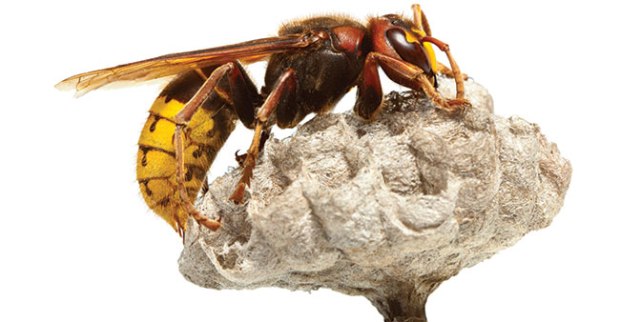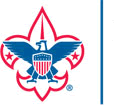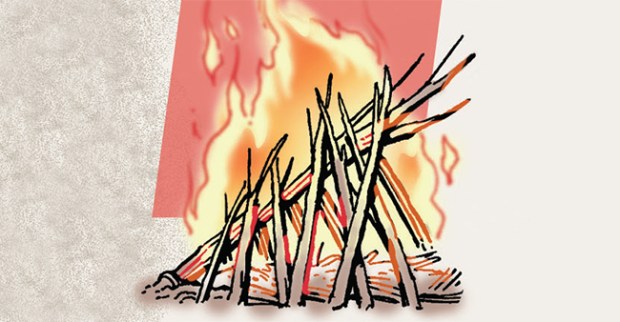Letting a line of ants crawl up your arm might seem kind of cool, unless they happen to be small red ones. Those are fire ants, and they will sting you. Keep your insect interactions interesting instead of painful by knowing how to identify biters and stingers — and then how to deal with bites and stings, just in case.
ANTS

Those fire ants? They live in colonies by the hundreds of thousands, so if you encounter one, you’ll want to get away quickly. They are red or reddish orange and tiny — as small as 1/16-inch long. Fire ants run around and will climb up your body. A sting burns like fire (surprise) and leaves an itchy spot. Some people are allergic and the whole area will get swollen.
TREATMENT: Ice can help with pain, especially if you have lots of stings. If you have a severe reaction or allergy to fire-ant stings, seek medical treatment.
BEES

A regular honeybee can sting you only once. Usually, they are interested in flowers, not humans.Africanized bees are different. They swarm, chase and keep on stinging. Problem is, unless you’re up close with a magnifying glass, you can’t really tell the difference between the two bees.
Jumping in a lake is not the way to escape Africanized bees. They’ll stay around while you’re under water. Best move? Try to get inside a structure: a car, house or even a tent.
TREATMENT: The honeybee leaves its stinger in you. Scrape it out with the hard edge of a credit card or a key to stop it from pumping in more venom. The sooner you get it out, the sooner it will feel better.
Africanized bees can be dangerous because of the number of stings. Treat a few with ice for the pain. If you get stung a lot or you’re allergic, you’ll need medical attention.
FLIES

Horseflies are often found around farms. The females bite to get blood to fertilize and feed eggs. On the good side, they don’t travel in groups. On the bad side, their mouths are like tiny pairs of scissors, so they leave a big mark.

Black flies also bite. They swarm and can get you all over. Unlike a housefly with stripes on the upper part of its body, black flies are plain black. They feed on blood and are often found around water.
TREATMENT: Fly bites can be large and painful. Hydrocortisone cream, ice, calamine lotion and Benadryl can help.
FLYING STINGERS

A hornet nest is large and gray. Hornets regurgitate the wood they chew, making the papery structure. If you mess with the hive, watch out for lots and lots of hornets to attack.

Wasps, on the other hand, are usually loners. They’ll keep stinging you over and over, though.

Yellow jackets are a type of wasp that swarms up from homes in the ground.
A hornet is black and white, while a yellow jacket looks like a skinny bee with a waist. Wasps can be all different colors and usually have two sets of wings.
A hornet’s sting is the most painful and also the most dangerous since you can get lots of stings at the same time if you’ve upset a nest.
Another stinger to avoid: the velvet ant. It is really a wasp, but it looks like an ant with bright red fur. The sting is so painful, its other name is “cow killer.”
TREATMENT: Ice or cold water can numb the stung area. If you have more than a few stings, you should seek medical attention to make sure you don’t have a reaction.
SPIDERS

The female black widow is the one that bites. She has a red hourglass on her abdomen and is very shiny black with no hair. Her legs are long and thin compared to her large abdomen.

A brown recluse is a bit hairy, but not as much as a tarantula. Less than an inch in size, it is very fast and pulls back its legs in defense. It’s also known as a fiddleback because the pattern on its back resembles a violin.
There are lots of other spiders, including some that bite, but these are the two to be most concerned about in the U.S. Always shake out shoes or items left outside to make sure no spider is hiding inside.
TREATMENT: See a doctor as soon as possible.
CHIGGERS

Chiggers are tiny mite larvae that leave toxins under your skin when they bite. This is what makes you itch intensely. Chiggers hang out in the grass, so prevention is your best strategy: Apply insect repellent, wear long pants and sleeves, tuck your pants into your socks, stay on the hiking path and try not to brush up against vegetation. After your hike, take a cool shower and wash your clothes in hot water.
TREATMENT: To stop the itching, try applying ice, hydrocortisone cream or calamine lotion. If it hasn’t resolved in a week or bites become infected, seek medical help. Learn more about treating chigger bites.
FIRST AID TIPS FOR STINGS AND BITES
Let a trusted adult know if you are stung or bitten. If you start to have difficulty breathing or other severe symptoms, get medical help immediately.
Allergies can cause severe reactions to insect bites and stings. Signs of this can include redness, swelling, flushing and hives. Bites can also lead to anaphylactic shock, which is a medical emergency that causes difficulty with breathing. If you have an allergy to stinging/biting insects, be sure to carry your EpiPen (check its expiration date before an outing). Discuss treatments for allergies with your parents and doctor.
Find out more in the Boy Scout Handbook or Fieldbook.
A NOTE ABOUT ICE: Ice should never be applied directly to your skin. Put a layer of fabric (such as a shirt or towel) between your skin and the ice. Apply ice no more than 15 to 20 minutes at a time. Repeat only after 20 to 30 minutes have passed and your skin has returned to normal temperature.





















